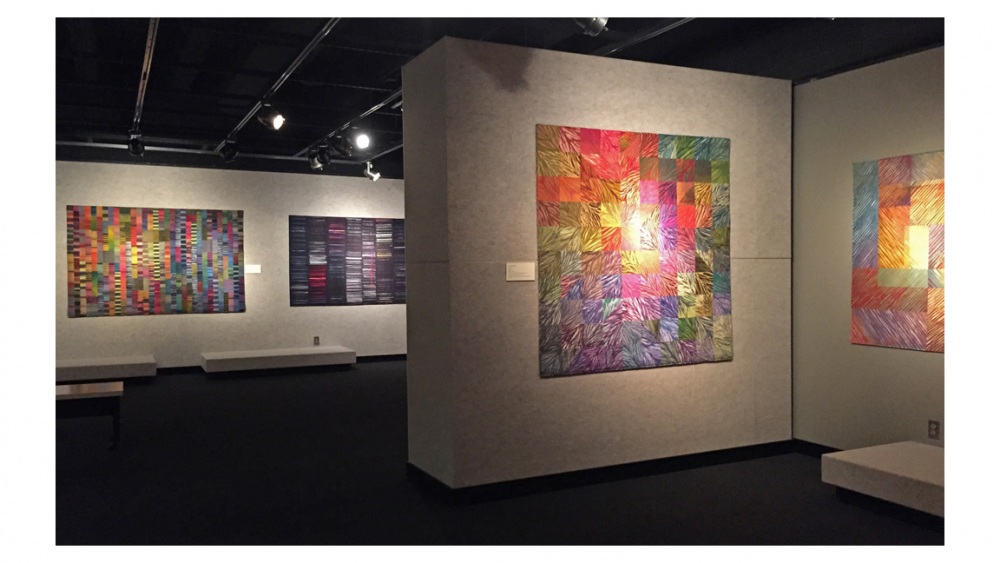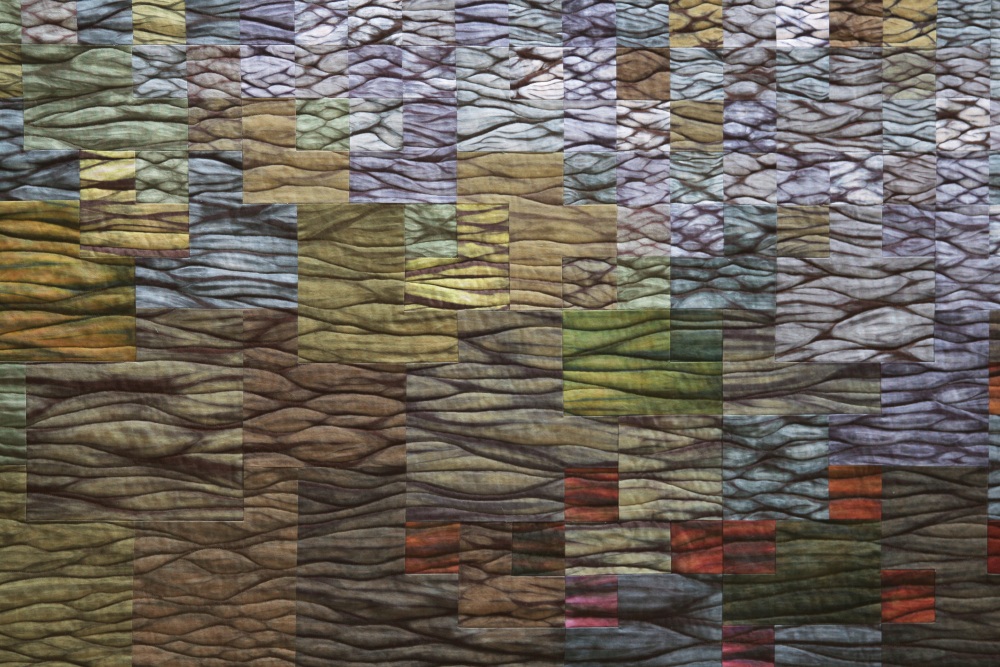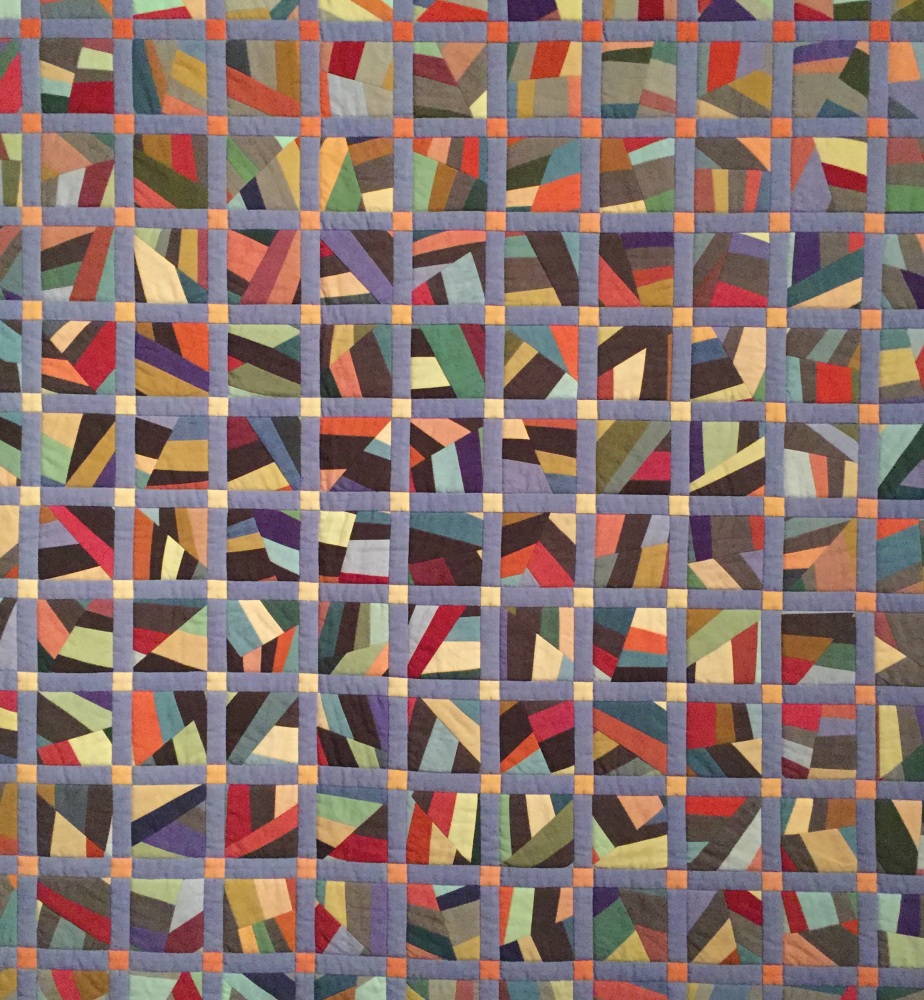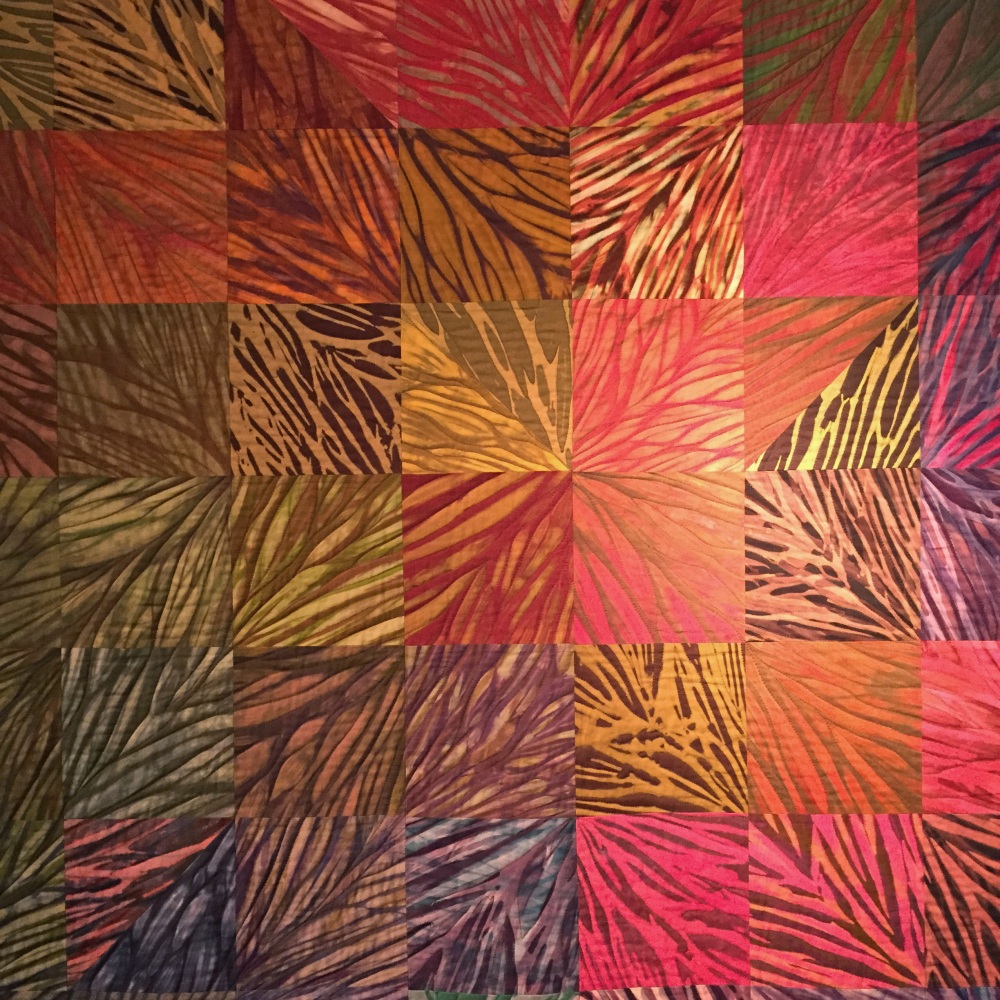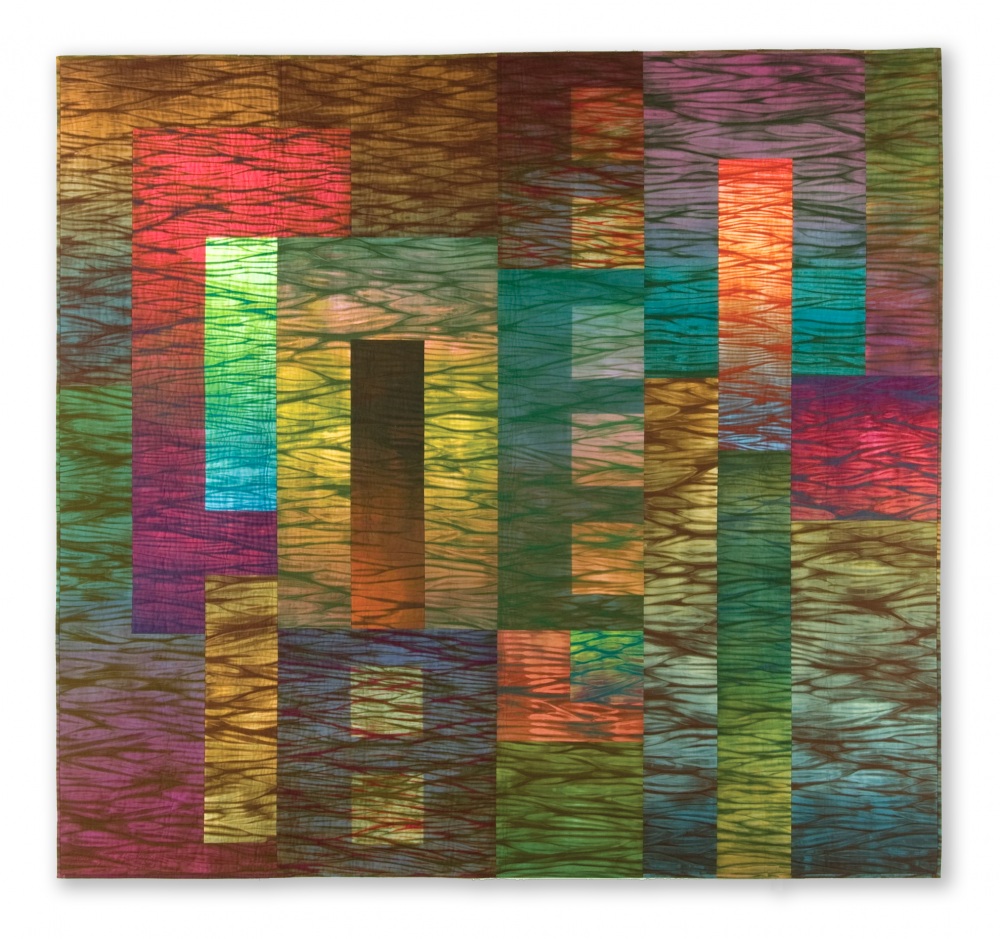Jan Myers-Newbury: A Touch of Kismet - Quilts, Color, Pattern, Chance
Monday, June 1, 2015 to Friday, September 4, 2015
Jan Myers-Newbury Essay Jan Myers-Newbury BIO
In conjunction with the International Quilt Study Center and Museum’s expansion grand opening on Friday, June 5, the Robert Hillestad Textiles Gallery will remain open until 8:00 p.m for a special viewing of the exhibition.
Jan Myers-Newbury will speak about her work on Sunday, June 7, 2015 at 3:00 p.m. in Room 11 of the Human Sciences Building on East campus. The talk is free and the public is invited. A reception will follow in the Robert Hillestad Textiles Gallery.From June 1 through September 4, 2015, the Robert Hillestad Textiles Gallery presents Jan Myers-Newbury: A Touch of Kismet – Quilts, Color Pattern, Chance, an exhibition of recent work by one of the widely acknowledged leaders of the art quilt movement.
For more than thirty-five years, Pittsburgh-based textile artist Jan Myers-Newbury has explored the interface between hand-dyeing and the pieced quilt. Her lyrical and sensuous quilt surfaces have set a high standard for color artistry in the studio quilt domain. This exhibition brings together a collection of works that exploit the pole wrapping shibori technique that Myers-Newbury has helped to popularize among non-traditional quilt makers and surface designers.
Commonly known as "tie-dyeing” these processes and their expressive outcomes are as diverse as the cultures that have developed them. Shibori originated in Japan, but its variants – jiao xie in China, plangi and tritik in Indonesia, mudmee in Thailand, adire in Nigeria, tie-dye in 1960s America – have explored and expanded what can be achieved with simple folding, pleating, twisting, tying, clamping, and fabric binding techniques. Each of these methods creates resists to the dyes, resulting in unique and highly variable fabric patternings that play off the contrasts of dyed and undyed areas.
Contemporary artists the world over have adapted these ancient techniques in diverse ways. Foremost among these is Yoshiko Iwamoto Wada, credited with introducing the art of Japanese shibori in the United States. Californian Ana Lisa Hedstrom, a gifted innovator who combines arashi shibori techniques with other strategies including digital scanning and digital printing to create strikingly graphic and arresting fabrics, studied early in her career with Wada. Hedstrom's work was featured in her solo exhibition Process=Pattern in the Robert Hillestad Textiles Gallery in 2004. The American Carter Smith’s opulent work was likewise featured in a Hillestad Gallery exhibition, The Art of Shibori: Untied Treasures in 2008. Other internationally known practitioners include Michelle Griffiths of the United Kingdom, Reiko Sudo of Japan, and Junco Sato Pollack of Japan and the US. Each has contributed bodies of original work that have enriched these ancient dyeing traditions.
In the world of so-called art or studio quilts, Jan Myers-Newbury has explored the relationship of shibori to patchwork with singular vision and ambition. With undergraduate and graduate degrees from St. Olaf’s College and the University of Minnesota respectively, she has built a unique body of quilt work that has influenced the hundreds of students she has taught in workshops across this country and abroad. Her advocacy of the shibori processes has increased the reach and influence of resist dyeing through an enormous subgroup of makers in the textile art field.
Of particular interest to Myers-Newbury are the serendipitous and unpredictable outcomes of the shibori process. "You would think," she says, "that as many times as I have unwrapped a pole after dyeing, I would become ho-hum about the results. But it never fails: I can’t wait to see how each piece turns out. I guess that’s because I’ve realized I only have a certain amount of control and the rest is kismet."
This surrender of control – albeit, an "educated" surrender, one informed by years of experience and practice – is not so much abandon as embrace. Myers-Newbury sets the stage intentionally. She prepares dyes of specific hues and saturations, she organizes particular fabrics, selects poles of certain dimensions around which to wrap, and controls the wrapping and binding of those fabrics around the tubes that serve as the process's spinal columns, giving stability to the fabric in the dyeing and over-dyeing stages.
The stock of dyed and patterned fabrics are then sorted and mentally catalogued as the artist begins the actual quilt making process. This involves a geometric articulation of the quilt surface – a disposition of rectilinear shapes most usually, with circular forms as variants in some instances – that will provide the armature for the surface design's development. The linear networks in each of her patterned fabrics both contrast with and complement one another, and from them arises the compositional unity that each of her quilts embodies.
Jan Myers-Newbury will speak on her work at 3:00 p.m. on Sunday, June 7, 2015 in Room 11 of the Human Sciences Building on east campus, as a guest of the Department of Textiles, Merchandising & Fashion Design and the Friends of the Robert Hillestad Textiles Gallery. The talk is free and open to the public. A reception with refreshments will follow in the Hillestad Gallery on the second floor.
The Robert Hillestad Textiles Gallery is open from 8:30 a.m. to 4:00 p.m. Monday through Friday, and by special request. Inquiries can be directed to the Department at 402-472-2911. Weekday visitors to the gallery are welcome to park on East Campus in areas marked "Visitor Parking." Parking passes for these areas can be obtained at the time of the visit in either the Dean’s Office Room 105 or the Department Office Room 234 in the Human Sciences Building . Additional metered parking is available north of the East Campus Union and west of Hardin Hall.
The Robert Hillestad Textiles Gallery is devoted to the exhibition of textiles: from art to apparel, from East to West, from past to present, and from emerging artists to the acclaimed. It serves as the primary venue for exhibition of work from the Department’s significant historic costume and historic textiles collections. The gallery is dedicated to Dr. Robert Hillestad, a highly respected fiber artist and Professor Emeritus of Textiles, Merchandising and Fashion Design.

Installation View. 2015. Jan Myers-Newbury: A Touch of Kismet
